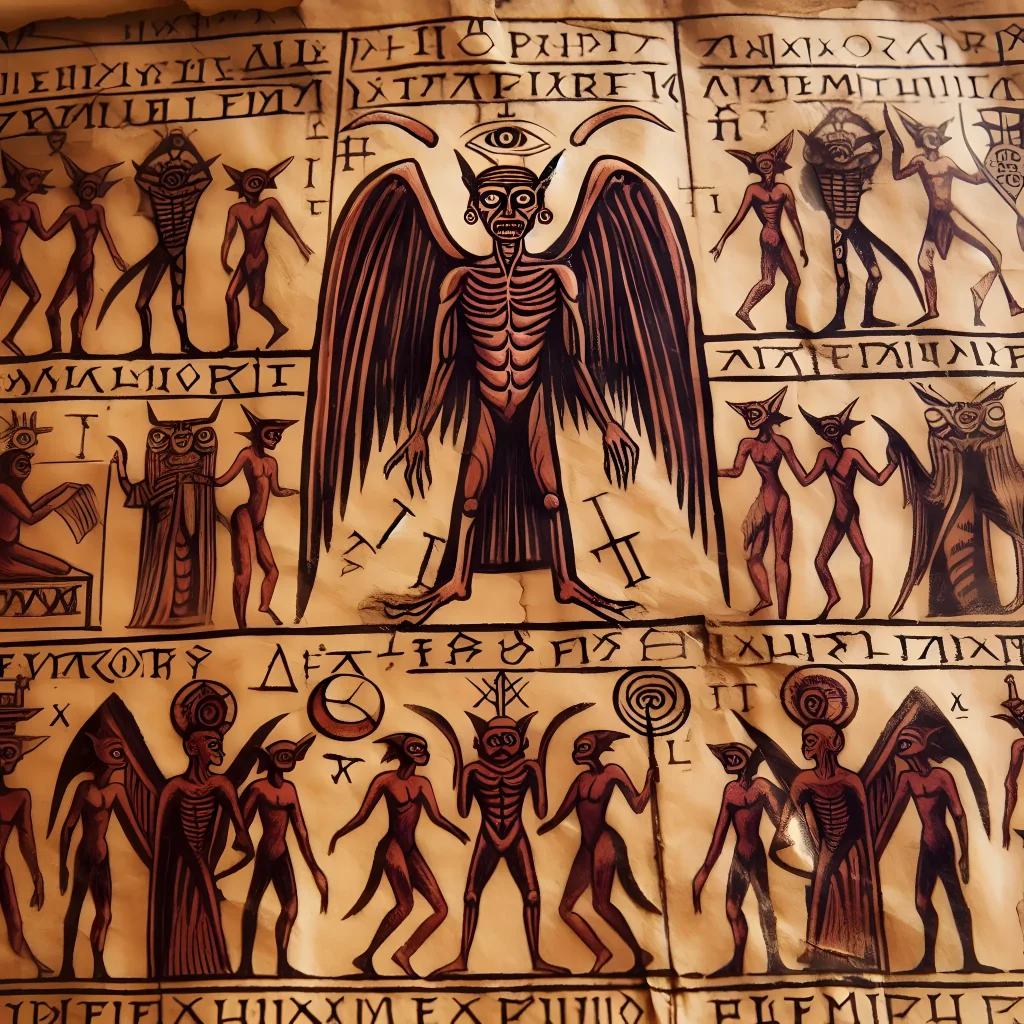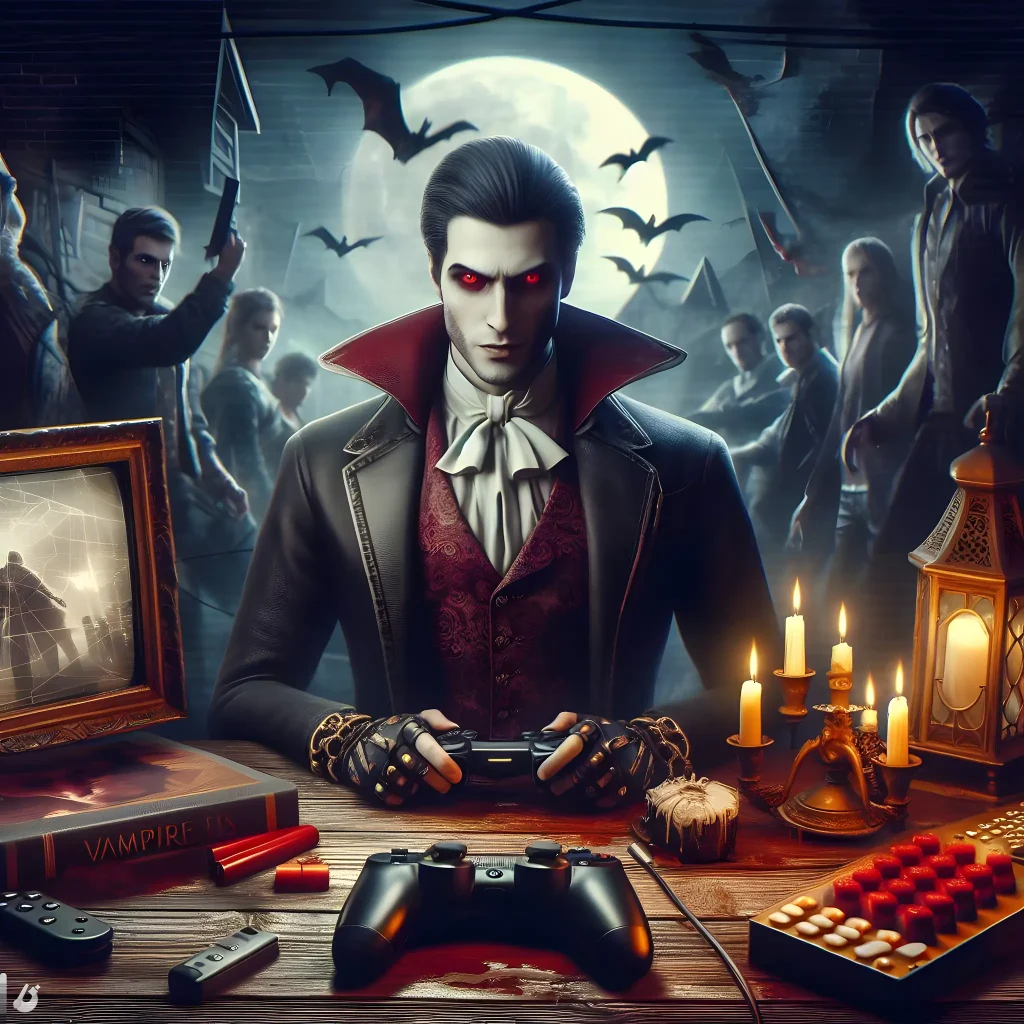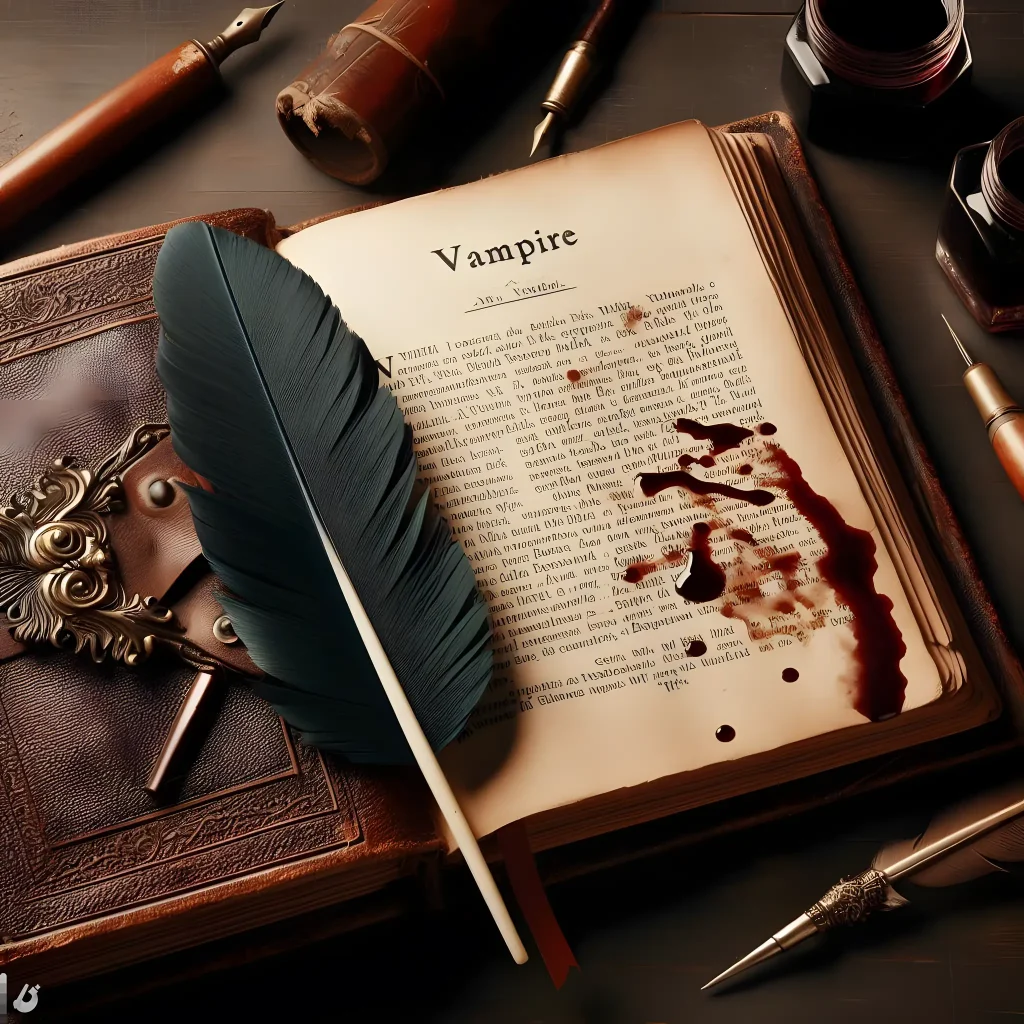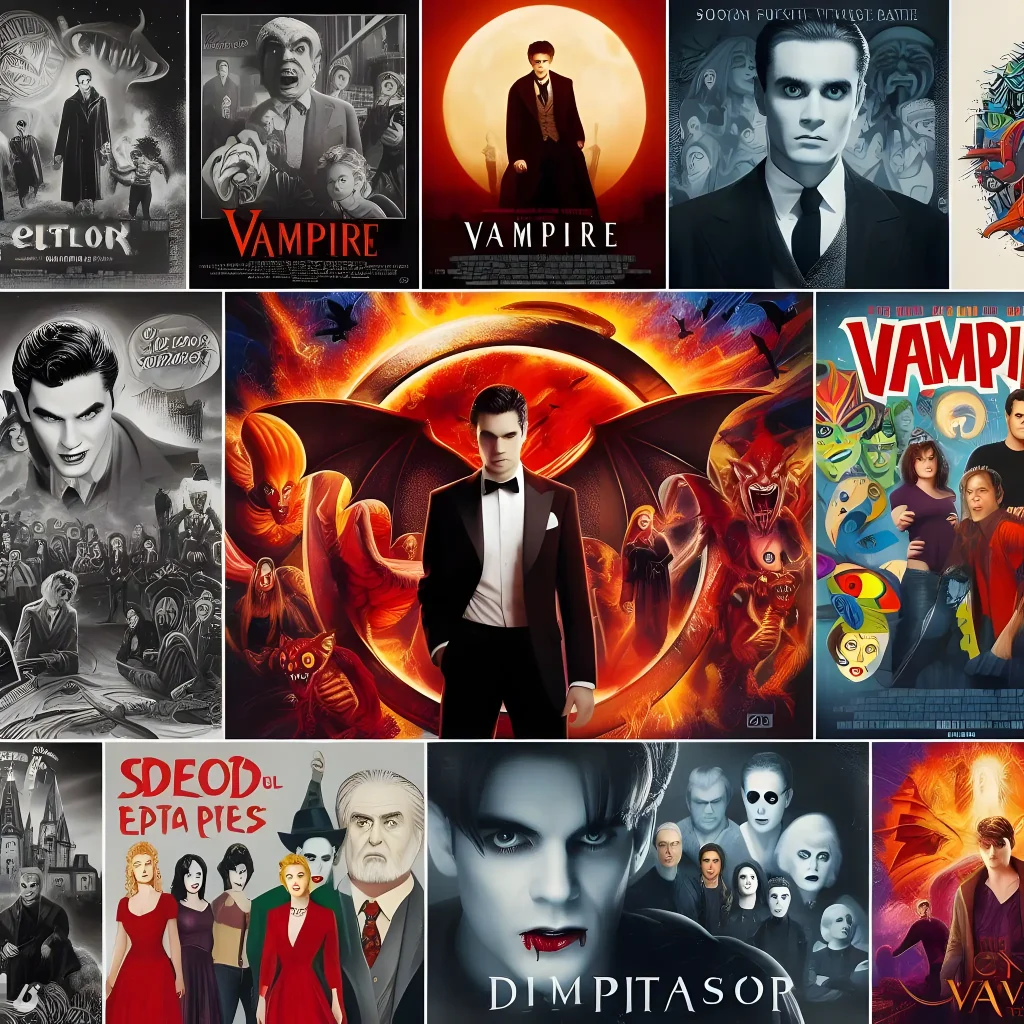In the shadowed corners of history and the bright glare of modern screens, the vampire has long been a symbol of both terror and fascination. This creature of the night has evolved from the sinister tales whispered in the villages of old to become a compelling figure in the pantheon of pop culture. But how did this transformation occur? How has vampire mythology persisted and changed throughout the ages? From the blood-soaked legends of historical vampires to the nuanced antiheroes of today’s media, we embark on a journey through the dark arteries of vampire history, tracing the indelible mark these beings have left on our collective psyche.
Here at HorrorFacts.com, we peel back the layers of time to reveal the essence of vampire mythology, exploring how these creatures have been reimagined and what their ever-changing personas say about us. Join us as we delve into the crypts of the past and emerge into the dazzling limelight of contemporary media, examining how the vampire has maintained its grip on our imagination. From the folklore that chilled the spines of our ancestors to the vampire evolution in the heart of modern storytelling, this is a tale that refuses to die. So, sharpen your stakes and hold your garlic close, as we explore the eternal allure of the vampire in the chronicles of human history.
The Origins of Vampire Mythology
Long before vampires were immortalized in the pages of novels or illuminated on the silver screen, they haunted the folklore of many cultures around the globe. These early tales of vampire mythology were often steeped in superstition and fear, serving as cautionary tales and explanations for the unexplainable tragedies of the living.
Roots in Ancient Civilizations
Some of the earliest mentions of vampire-like creatures can be traced back to ancient civilizations. The Greeks, Romans, and Egyptians all had myths that featured entities bearing a resemblance to the modern concept of vampires. These creatures were often associated with malicious spirits or demons that would feed on the living.
The Slavic Vampire
The most direct ancestors of today’s vampire myths are often found in Slavic folklore. It is here, in the windswept villages and dark forests of Eastern Europe, that the term “vampire” took root. The historical vampires of this region were believed to be revenants, returning from the dead to harm their living relatives or spread disease.
Vampire Hysteria in Medieval Europe
Moving into the medieval period, the vampire became a figure of both vampire history and hysteria. During times of plague and unexplainable deaths, it was not uncommon for fear-stricken communities to point to vampires as the culprits. This period saw the rise of grave-digging and staking, practices born out of desperation to protect the living from the presumed threat of the undead.
Embedding in Local Lore
Each region added its own nuances to vampire tales, shaping vampire mythology through local customs and beliefs. In some areas, vampires were repelled by garlic and holy symbols; in others, they could not cross running water or were known to cast no shadow. These varied legends formed a rich tapestry that has influenced the portrayal of vampires throughout subsequent history.
This section of the article not only enhances the reader’s understanding of the origins and diversity of vampire myths but also strategically employs the targeted keywords “Vampire Mythology,” “Vampire History,” and “Historical Vampires” to maintain SEO effectiveness. By providing this historical context, we’re setting the stage for an exploration of how these early myths have transformed into the vampires we recognize in media today.

The Vampire in Renaissance and Enlightenment Eras
As the world entered the Renaissance and Enlightenment periods, the belief in vampire history began to shift. Scientific reasoning started to challenge the superstitions that had fueled the vampire hysteria of the Middle Ages. However, this didn’t diminish the public’s fascination with these nocturnal creatures. Instead, the vampire was about to enter a new phase—one of literary intrigue and romanticization.
Literary Beginnings and Gothic Influence
The 18th century saw the vampire make its first major forays into Western literature, initially through poetry and later through the seminal novellas of the Gothic period. It was during this era that the vampire began to acquire a more sophisticated and aristocratic air, a departure from the monstrous figures of Slavic folklore.
Polidori and the Byronic Vampire
The publication of John Polidori’s “The Vampyre” in 1819 marked a turning point in the evolution of vampire characters. His protagonist, Lord Ruthven, was the first vampire in English literature to embody the characteristics of the charming and seductive aristocrat—a template that would heavily influence future vampire mythology.
The Pinnacle of Vampire Literature: Dracula
Bram Stoker’s “Dracula,” published in 1897, became the definitive work on the vampire mythos. Stoker’s Count Dracula amalgamated centuries of vampire lore, drawing from both historical vampires and the contemporary works that preceded him. This iconic character cemented many of the traits we now associate with vampires, from their aversion to sunlight to their need to feast on human blood.
The Influence of Dracula on Modern Vampire Mythology
“Dracula” not only impacted the literary world but also set the stage for future adaptations in film and television. Stoker’s vampire has been reinterpreted countless times, each adaptation adding new layers to the vampire mythology while staying true to the core elements that have made the character an immortal part of our cultural fabric.
The Silver Screen: Vampires in Cinema
With the advent of film, vampire mythology found a new medium to captivate audiences and spread its dark wings over the collective imagination. The silent film era introduced the vampire to the silver screen, with F.W. Murnau’s “Nosferatu” in 1922 setting a haunting precedent for vampire portrayals in movies.
The Evolution of Cinematic Dracula
Bela Lugosi’s portrayal of Dracula in 1931 further solidified the vampire’s status in popular culture. This adaptation stayed close to Stoker’s vision, emphasizing the Count’s noble lineage and menacing charm. Over the years, the character of Dracula has been revisited by countless actors, each bringing their own interpretation to the iconic role, reflecting changes in societal attitudes and cinematic trends.
Diversification of Vampire Roles in Film
As the 20th century progressed, vampires in cinema evolved beyond the archetypal Dracula figure. Filmmakers began experimenting with different aspects of vampire mythology, giving rise to various sub-genres. From the romantic to the comedic, and from the horrific to the action-packed, vampires proved to be versatile protagonists and antagonists adaptable to any storytelling style.
The Modern Vampire in Television and Digital Media
The small screen has been no less influential in the evolution of vampire lore. Television series have explored the vampire myth with a depth and nuance that films often cannot afford, due to the episodic format allowing for complex character development and plot arcs.
Serialized Storytelling and Vampire Mythology
Shows like “Buffy the Vampire Slayer,” “True Blood,” and “The Vampire Diaries” have contributed significantly to modern vampire mythology. These series have painted vampires as multifaceted beings, capable of love, honor, and moral struggles, pushing the boundaries of vampire history and audience expectations.
The Internet and Vampire Fandom
The rise of digital media has given fans of vampire lore an unprecedented platform to explore and contribute to the vampire mythology. Online communities, fan fiction, and web series have allowed for a democratization of the myth, with new vampire stories and interpretations constantly emerging from places all around the world.
The Vampire’s Immortal Presence in Gaming and Literature
As we venture further into the digital age, vampires have sunk their teeth into the interactive world of video games and have continued to thrive in contemporary literature. This multimedia approach has allowed vampire mythology to expand into new territories, engaging with audiences on an even more personal level.
Role-Playing and Immersion in Vampire Games
Video games like “Vampire: The Masquerade – Bloodlines” and “Castlevania” series have created immersive experiences that allow players to embody or combat vampires, further enriching the lore. These interactive narratives let players explore the moral complexities and social hierarchies within vampire societies, adding layers to the vampire history and making it a part of their own virtual journey.

The Vampire Reimagined in Modern Novels
New literary works continue to contribute to the evolution of vampire characters. Authors like Anne Rice and Stephenie Meyer have redefined vampire mythology through their novels, exploring themes of existentialism, romance, and identity. Their vampires are both timeless and reflective of contemporary issues, resonating with new generations of readers.
The Cultural Impact of Vampire Evolution
The transformation of vampire mythology over the centuries reflects our own societal changes and the shifting paradigms of fear and desire. What started as a superstitious explanation for the unknown has morphed into a complex symbol of our darkest fears and deepest longings.
Vampires as Metaphors for Modern Issues
Vampires have become metaphors for a variety of modern-day issues, from the spread of disease to the complexities of sexuality. The historical vampires of folklore have transcended their original roles to become avatars for exploring the human condition.
The Future of Vampire Mythology
As we look ahead, it’s clear that vampire lore will continue to evolve alongside our changing world. The adaptability of vampire tales ensures that they will remain a fixture in media and pop culture, captivating audiences with their eternal dance between humanity and the monstrous.
The Unending Allure of the Vampire Legend
As we close the coffin lid on our exploration of the vampire’s journey through the annals of time and media, it is clear that the fascination with these creatures is far from buried. Vampire mythology has not only survived but thrived, continually adapting to the heartbeat of our collective imaginations. From the menacing shadows of ancient legends to the complex characters of modern narratives, vampires remain a potent symbol of the human experience—our fears, our desires, and our quest for understanding the unknown.
Why Vampires Will Never Die
The reason for the enduring appeal of vampires lies in their ability to evolve. As society changes, so too does the vampire, always reflecting back at us our own image, albeit with fangs. They challenge us to confront our mortality, our ethics, and our capacity for both good and evil. This eternal relevance is why the vampire, as a figure of vampire history and storytelling, will continue to captivate for generations to come.

The Legacy of Historical Vampires
The legacy left by historical vampires—both real and imagined—has laid the groundwork for an endlessly rich vein of cultural expression. They have become more than just monsters; they are now protagonists, anti-heroes, and symbols of rebellion and freedom. Their evolution is a testament to the power of storytelling and its ability to morph with the times.
The Future of Vampire Lore in Media
As we peer into the future, it is certain that vampire lore will persist in media, finding new ways to reinvent itself. Whether through the next blockbuster film, a binge-worthy TV series, or an immersive video game, the vampire will continue to walk among us in the arts and media, immortal as ever.
The story of the vampire is one of eternal transformation—a narrative that will continue to unfold as long as there are people to tell it. And HorrorFacts.com will be here, chronicling every chilling chapter, ensuring that the pulse of vampire lore never fades into the darkness.
We invite you, dear reader, to remain a part of this undying narrative. Your thoughts and theories are the lifeblood that keeps the conversation alive. Share your insights, your favorite depictions, and the ways in which vampire mythology has touched your life. Comment below, engage with fellow enthusiasts on our forums, and become an active participant in the ongoing saga of these fascinating creatures of the night.
Looking for more Vampire Reads?
Dive into the shadowy intersection of folklore and science with ‘Unmasking the Vampire’s Curse: The Medical Mystery of Porphyria.‘ Explore how the rare blood disorder porphyria, with its striking symptoms resembling vampire traits, sparked fears of vampirism in history.
From the photosensitivity and reddened teeth to the cases of Mercy Brown and other historical figures, discover how porphyria’s misunderstood signs once blurred the lines between medical conditions and mythical creatures.
Join Us on the Journey
As the keepers of HorrorFacts.com, we pledge to continue our vigilant watch over the realms of the macabre and the supernatural. Our dedication to unearthing the most compelling stories and presenting them with the reverence they deserve is unwavering. Stay with us as we delve deeper into the mysteries of the paranormal and the arcane, always seeking to quench your thirst for the chilling and the otherworldly.
Remember, in the world of horror and the supernatural, every shadow could conceal a story, and every legend holds a grain of truth. Keep your senses sharp, and never stop questioning what lurks in the darkness. For in the end, it is our fascination with the unknown that keeps the heart of horror beating.

